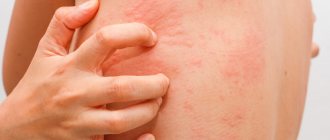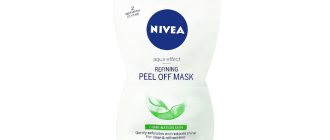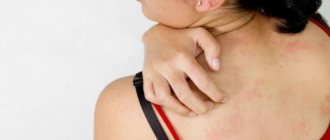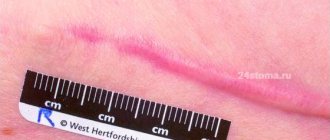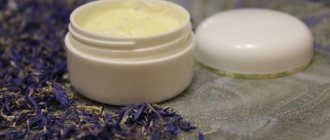Useful tips
Cracks and rough heels are not only an aesthetic problem. This is also quite a serious discomfort: a person experiences pain when walking, and women also have difficulty buying beautiful, open shoes for the summer.
To prevent this from becoming a serious problem over time, the rough layer of skin on the heels must be constantly removed.
In order to get rid of cracks and rough skin on the heels, you need to follow several fairly simple, but at the same time quite effective methods.
Why do my heels dry out?
There are several explanations why, of all the areas on women’s feet, it is the heels that often dry out. Here are the main reasons that can cause the appearance of dry and rough skin or even cracked heels.
- Lack of moisture
: both external and internal. Excessively dry indoor air, hot heating season in winter, non-compliance with drinking regime... All this can lead to general dehydration of the skin - including dry and rough heels. - Possible deficiency of useful elements
: in particular, a lack of vitamins A and E, polyunsaturated fatty acids and other microelements in the diet can cause the appearance of dry skin on the heels - especially in older people or in the presence of chronic diseases. - Incorrect care
: intensive removal of rough skin using a razor, pumice stone or large abrasive particles can cause the injured skin to renew itself unevenly. In this case, it may be prone to dryness, roughness and cracking. - Ill-fitting shoes
: Another common reason why women may complain of dry heels or even cracked heels. Moreover, this danger comes from both too tight and too loose shoes. This is due to the constant pressure of tight shoes on the skin, or to excess friction that occurs when we walk in shoes that are too large. - Fungal infections and other health problems
: however, we will not touch on them in this article. Such situations must be diagnosed and treated by a doctor (dermatologist, podologist and/or endocrinologist).
Cracks on the feet
Cracks are an obligatory companion to hyperkeratosis of the feet. Excessively thick skin that has lost its elasticity can no longer resist the loads that arise when walking as effectively as before. Cracks appear in places of greatest pressure. Their favorite location is the heels.
Typically, the crack is wider at the surface of the skin and narrows deeper. With prolonged existence, the edges of the cracks also become keratinized and thickened.
However, this does not lead to a cure. On the contrary, when walking, such a crack deepens even more and begins to bleed. In severe cases, cracks can reach the bone.
Basic rules for caring for dry and rough heels
Sometimes it seems that even very dry heels do not require any special care - just regular peelings and pedicures are enough. Of course, this is not entirely true. Like any area of our body, heels need care rituals.
Cleansing
Of course, you don’t need to look for any special product for washing your heels - just choose a body cleansing gel that also has intense moisturizing properties. A good example would be CeraVe Moisturizing Cleansing Cream-Gel, which is suitable for normal to dry body skin.
Moisturizing cleansing cream-gel
For normal to dry skin of the face and body
Effectively cleanses and moisturizes the skin, helping to restore its protective barrier.
More details
CeraVe cream-gel effectively cleanses the skin and contains hyaluronic acid and glycerin, which promote intense hydration. The ceramides included in the composition are also responsible for restoring and strengthening the skin's protective barrier, helping to resist negative environmental factors.
Hydration and restoration
The second basic stage of care should be the use of a moisturizing and renewing product - such as CeraVe Restoring Foot Cream. It is designed for dry and rough skin on the feet and contains ceramides, salicylic acid and niacinamide.
Revitalizing foot cream
For dry skin
Effectively exfoliates and moisturizes chapped foot skin without irritating it.
88 ml
More details
Thanks to this composition, CeraVe Regenerating Foot Cream softens and moisturizes dry skin on the heels, restoring it. Ceramides help maintain and strengthen the skin's protective properties, while salicylic acid gently exfoliates dead skin cells and promotes rapid skin renewal.
Exfoliation
As we have already said, peeling the skin in the heel area should be quite gentle and delicate. Do not get too carried away with the use of pumice stones, active scrubs or mechanical methods of skin removal, including trimming pedicures.
Instead, it is better to use softening baths, scrubs with small abrasive particles 1-2 times a week, or, as necessary, do an unedged (hardware) pedicure in a specialist’s office. These are more gentle/gentle ways to soften and exfoliate rough, dry or rough heel skin.
Ways to deal with rough heels
Soda baths
This procedure can be performed daily
. To do this, you need to pour four tablespoons of soda into a bowl of warm water and soak your feet in it for fifteen minutes. After the coarsened layer has steamed a little, it can be easily removed with a regular pumice stone or a special nail file. You will not see the effect in one such procedure, be patient, repeat the procedure constantly and the result will not be long in coming.
Special scrubs
We clean the heels for five minutes, rinse them in water and apply a special scrub to them. We rub it in different directions. After this, rinse your feet with water and lubricate with rich cream.
Herbal decoctions
Herbs such as St. John's wort, calendula, sage, chamomile, elecampane are very suitable for decoctions.
. Pour one tablespoon of any herb into one liter of water and bring to a boil. Let the broth boil for about five minutes, then let it brew for about fifteen minutes. Leave your feet in the prepared broth for twenty minutes, then rub them thoroughly with a pumice stone. Rinse your feet with water, apply cream and put on warm socks. For cracked heels, use almond, sea buckthorn or olive oil.
Onion peel
In order to soften the skin of the feet and heal cracked heels, it is recommended to use onion peels.
A handful of husks must be brewed with two liters of boiling water and, covered with a lid, left to steep for one hour in a warm place. Pour a hot broth into a basin and add soda and salt to it, one tablespoon at a time, then put your feet in there and keep them there until the water cools down. Then wipe your feet, brush with butter and raw egg yolk. Put on thin socks, wrap the top with cling film and put woolen socks on top. Usually five such procedures are enough to completely cure cracked legs.
Cedar resin
It so happens that all of the above methods may not work and may not have a positive effect, since the skin on the legs has become significantly rougher and severely cracked. In this case, you should use resin. And the best choice is cedar resin - a kind of sticky substance that is secreted by the bark of a tree.
Resin has a number of medicinal properties:
- Stop bleeding
- Healing purulent wounds
- Destruction of bacteria
- Stimulation of repair of damaged tissues
Rough heels of the feet should be lubricated with resin at night.
. The pain in the leg goes away almost instantly, and the cracks heal in a couple of days, unless, of course, much pressure is put on the legs.
Application of glycerin
Glycerin is a very effective remedy for combating cracked heels.
both in masks and as an additive to foot baths. Take one teaspoon of glycerin per liter of water. You need to soak your feet in the resulting solution for about twenty minutes, then treat them with pumice and lubricate them with cream.
Lemon acid
A good remedy for getting rid of keratinized tissue on the heels is citric acid.
. Lemon can protect against infections. It removes dead cells well. You can tie it to your heels all night, and in the morning remove the bandage and lubricate the skin with baby cream. Do this procedure every day until the skin on your feet becomes soft and tender.
Almond oil
This oil has many beneficial properties
. It is an excellent product for body and face care. Almond oil softens, nourishes and moisturizes the skin, and it can also increase its elasticity. Almond oil contains a lot of vitamin E, which slows down the aging process of cells and is able to remove various skin inflammations. This oil is very soothing to the skin. Before use, it must be heated and rubbed in only when warm.
Treatment with aspirin
Aspirin mixed with iodine and medical alcohol can heal cracked heels.
Treatment takes place in a very short time. First, wash your feet thoroughly, wipe them dry, apply the mixture to your heels, and put on cotton socks on top.
Aspirin can heal wounds, alcohol disinfects, and iodine will dry out the skin. Alcohol can be successfully replaced with vodka. This remedy will only be effective if there is no fungus on the feet.
Dry and rough heels: what else can be done at home
What else can you do to soften dry heels? In addition to basic care rituals, you can also use auxiliary beauty procedures that will help make the skin of your heels smooth and soft.
- Foot baths
: a time-tested remedy for softening and soothing dry and rough skin on the feet. Important: It is not recommended to keep your feet in water for more than 10 minutes - remember that water can dry out the skin. Before you take a herbal bath for the first time, make sure that you do not have allergic reactions to them. - Masks and compresses
: nourishing masks and compresses based on cosmetic oils are usually made after steaming and exfoliating dry skin. They help saturate the skin with useful substances, additionally nourish and soften it. - Skin polishing
: if you are used to using a pumice stone or a file to thoroughly exfoliate the stratum corneum on your heels, try to choose “soft” formats of these products. Use them no more than once a week and do not use them if you have open wounds or cracks on your skin.
Traditional medicine recipes for flaky foot skin
In the refrigerator and at hand we have a lot of useful products that will help in the fight against dry skin on the feet. You can make all kinds of masks, compresses, and baths from them. Cosmetologists recommend using these recipes to combat peeling.
- A compress of honey and flour helps very well with peeling. You need to take two tablespoons of honey and three tablespoons of flour. Mix the ingredients until smooth. Make two small cakes from the resulting slurry. Feet should be steamed first. Place honey cakes on the steamed heels, wrap your feet in plastic and put on socks. The effect of the compress is amazing. Within a week, the skin will become soft and tender.
- Yolk ointment has a good softening, nourishing and healing effect. You need to take one yolk, mix it with a teaspoon of vinegar and a tablespoon of vegetable oil. Apply the resulting mixture to your steamed legs. The heels will delight you with softness and tenderness.
- Author: Author: Alena
Rate this article:
- 5
- 4
- 3
- 2
- 1
(16 votes, average: 3.7 out of 5)
Share with your friends!
Is it possible to prevent the development of dry skin on the heels?
There are simple measures that will help keep the skin on your heels smooth and properly hydrated - even if it is prone to dryness and flaking.
- Try to maintain a drinking regime - drink at least 30 ml of liquid (preferably clean drinking water, not tea or coffee) per 1 kg of body weight.
- Make sure that the diet is complete: it contains all the necessary elements (in particular, vitamins A, E and D), polyunsaturated fatty acids.
- Choose your shoes carefully: avoid uncomfortable lasts, synthetic materials, and refrain from wearing high-heeled shoes frequently.
- Choose cotton socks over synthetic ones and try to avoid walking barefoot - especially if you have abrasions or cracks in your heels.
- Take care of the skin of your feet and heels every day, dry them thoroughly after hygiene procedures and, if possible, refrain from using electric saws, straight razors and other tools that can sand the skin more than necessary.
Today we told you why heels can dry and peel, what to do in this situation, how to care for dry heels and how to moisturize them. We hope that our tips and tricks will help you keep your heels smooth and soft!
How to deal with peeling yourself
We have figured out the causes of peeling. But women are much more interested in the question of how to deal with this trouble. We will talk about this below. Once again, I would like to note that if the cause of peeling is still unclear, you should consult a doctor.
- First of all, take care of good shoes that allow air to pass through and
allows the skin to breathe. Socks and tights should also be made of breathable natural fabric. You should not walk barefoot, as this increases peeling. Regular socks will prevent your heels from getting too rough.
- Choose a good vitamin complex. The body will receive the necessary vitamins and the skin will become better. In addition, you will support your immune system and get rid of other problems caused by vitamin deficiency.
- You need to take care of your feet daily. Make it a rule to pay attention to your feet every day, smear them with softening, moisturizing creams, and make foot baths with sea salt. Regular foot care is the most important rule. Use special exfoliating products and high-quality heel files. You can find good time-tested traditional medicine recipes that will help your legs look great.
- Now there are Japanese-made pedicure socks on sale, which are highly praised by women. The socks contain lactic acid, which acts as a good peeling. After using the socks, the skin comes off the feet on its own.
If you take all these measures together and regularly, then your heels and feet will quickly acquire an aesthetic appearance. It will be much easier for you to take care of your feet if you do this on an ongoing basis.

